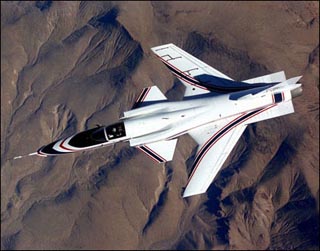
Highly maneuverable aircraft, like this X-29, often require sophisticated control systems to fly stably. (Photo courtesy of NASA Dryden Flight Research Center Photo Collection.)
Instructor(s)
Prof. Jonathan P. How
Prof. Emilio Frazzoli
MIT Course Number
16.30 / 16.31
As Taught In
Fall 2010
Level
Undergraduate
Course Description
Course Features
Course Description
This course will teach fundamentals of control design and analysis using state-space methods. This includes both the practical and theoretical aspects of the topic. By the end of the course, you should be able to design controllers using state-space methods and evaluate whether these controllers are robust to some types of modeling errors and nonlinearities. You will learn to:
- Design controllers using state-space methods and analyze using classical tools.
- Understand impact of implementation issues (nonlinearity, delay).
- Indicate the robustness of your control design.
- Linearize a nonlinear system, and analyze stability.
Other Versions
Other OCW Versions
OCW has published multiple versions of this subject. ![]()
Archived versions: ![]()


